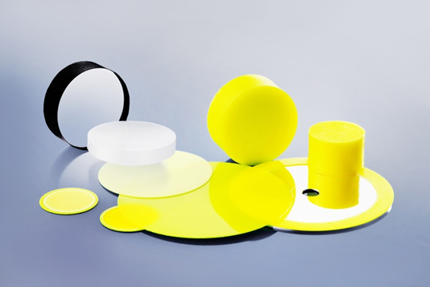Developers of German Technology Group SCHOTT have produced transparent and translucent ceramics that pave the way for highly efficient LED systems. Transparent and translucent ceramics are on the verge of being put to industrial use as new optical materials that offer great potential.
As part of the publicly funded research project OptokeraMat, SCHOTT Research and Development has laid important foundations on manufacturing them in a reproducible manner. Manufacturing of transparent or translucent ceramics at the SCHOTT lab takes place based on a sophisticated process chain. Depending on the application, highly reactive oxide nanopowders of various compositions are mixed, doped, homogenized in liquid media and then dried again.
At first sight, the ceramics remind of glass lenses or color filters. Nevertheless, SCHOTT is convinced that immense new potential lies in these transparent or milky-yellowish platelets made of ceramic.
These ceramics have their strengths mainly as translucent, in other words semi-transparent, materials for color conversion. Color conversion is the foundation of all white LED light sources, which are actually blue LEDs coated by a luminescent material. This material is usually bound inside silicone with a rather low heat resistance.
Schott says in its release that the current color conversion materials on the market are “not nearly as heat resistant as the fluorescent ceramic manufactured at temperatures in excess of 1,600°C.” In combination with high-intensity LEDs or laser diodes, the outstanding temperature stability and thermal conductivity of these ceramic converters allow new light sources to be developed. Their luminance is 2 to 3 times higher than that of a typical xenon burner. Areas of application include beamers, next-generation digital projectors and headlights, for example.
md


